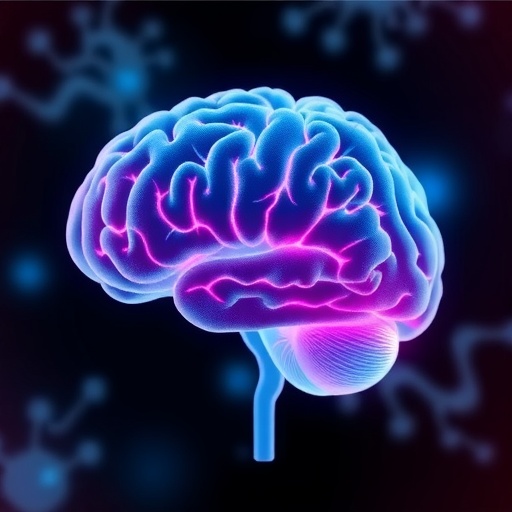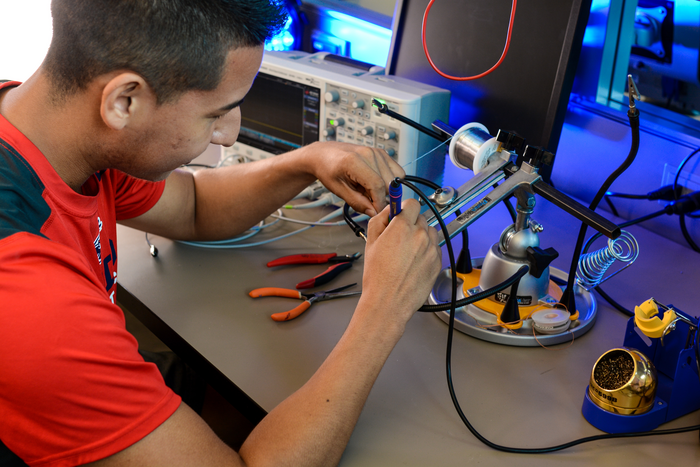Neonatal hypoxic-ischemic brain damage (HIBD) remains one of the most formidable challenges confronting pediatric neurology, with devastating consequences that can persist throughout a lifetime. The intricate pathophysiology of HIBD involves complex molecular and metabolic disruptions triggered by oxygen deprivation and ischemia, leading to neuronal injury and death. Traditional therapeutic options have shown limited efficacy, prompting an urgent need to unravel new molecular pathways that could pave the way for innovative treatments. In a groundbreaking study recently published in Pediatric Research, Wang et al. delve deeply into the newly emerging field of protein lactylation, exploring its crucial role in neonatal HIBD through a comprehensive multi-omics approach that unveils novel biomarkers and potential therapeutic targets.
Lactylation, a relatively recently identified post-translational modification, refers to the addition of lactyl groups to lysine residues on proteins. This modification is gaining attention due to its significant impact on chromatin regulation and gene expression, linking metabolic changes directly to epigenetic processes. Despite growing evidence implicating lactylation in various pathological states, its role in neonatal brain injury remains largely uncharted territory. The study by Wang and colleagues pioneers this investigation by systematically analyzing lactylation-related genes (LRGs) using state-of-the-art transcriptomic, proteomic, and metabolomic datasets derived from models of neonatal hypoxic-ischemic injury.
Multi-omics integration achieved in this research stands at the forefront of systems biology, enabling a holistic understanding of the molecular cascades activated post hypoxia-ischemia. The researchers employed robust bioinformatics tools to analyze gene expression profiles alongside metabolic alterations and lactylated protein quantifications, allowing for the identification of critical regulatory nodes within the HIBD molecular network. Their results highlighted a subset of LRGs exhibiting differential expression patterns tightly correlated with disease severity, suggesting these genes as potential biomarkers for early diagnosis or prognosis.
One of the most fascinating revelations of this study is the mechanistic insight into how lactylation modifies chromatin architecture in neuronal cells under hypoxic stress. By demonstrating increased lactylation on histones and other nuclear proteins, the team showed that lactylation facilitates the activation of pro-inflammatory and apoptotic pathways, exacerbating neuronal damage. These findings advance our understanding of the metabolic-epigenetic interface in HIBD, revealing an unappreciated layer of gene regulation that may be harnessed for therapeutic benefit.
Furthermore, the involvement of metabolic intermediates, especially lactate, is underscored as not merely a byproduct of anaerobic glycolysis but as a signaling molecule that profoundly influences histone lactylation. This functional role of lactate challenges prior conceptions and opens avenues to rethink metabolic contributions to brain injury outcomes. Wang et al. expertly dissect how aberrant lactate accumulation following ischemic insult potentiates pathological lactylation, disrupting cellular homeostasis and promoting neuroinflammation.
The deep profiling also unveiled potential cross-talk between lactylation and other post-translational modifications, such as acetylation and methylation, hinting at a sophisticated epigenetic regulatory network that determines neuronal fate after injury. The interplay among these modifications may orchestrate diverse gene expression programs that govern survival or death pathways in damaged neonatal brains. Elucidating this dynamic regulatory code holds promise for novel intervention points.
Significantly, the study’s comprehensive data reinforce the concept that lactylation-related pathways could serve as therapeutic targets. Pharmacologic modulation of lactylation levels—either by interfering with lactate metabolism or by directly targeting enzymes responsible for adding or removing lactyl groups—offers a tantalizing strategy for mitigating the devastating effects of HIBD. Such precision medicine approaches could shift treatment paradigms from symptomatic care to molecularly tailored neuroprotection.
Methodologically, the multi-omics approach employed by Wang and colleagues is exemplary for its depth and rigor. The researchers seamlessly integrated transcriptome sequencing with quantitative lactylomics and metabolomics, supported by meticulous validation experiments in cellular and animal HIBD models. Their pipeline exemplifies how modern technology can unravel complex biochemical landscapes and translate molecular findings into clinical relevance.
Equally compelling is the translational potential of these findings. Identifying lactylation-related biomarkers in accessible biofluids like cerebrospinal fluid or plasma may enable early, noninvasive detection of brain injury severity. This heralds a new era where clinicians can stratify risk, personalize treatment, and monitor therapeutic efficacy with unprecedented precision, ultimately improving outcomes for the most vulnerable patients.
While the study sets a new benchmark, it also raises compelling questions for future research: How can the temporal dynamics of lactylation during injury and recovery phases be mapped? What are the cell-type specific effects of lactylation in neurons versus glial cells? Could lactylation be exploited for enhancing regenerative responses in the neonatal brain? These open avenues are ripe for exploration.
On a broader scientific scale, this pioneering study shines a spotlight on lactylation as an emerging epigenetic modulator in brain pathology. By bridging metabolism and gene regulation, it invites the scientific community to rethink classical paradigms of neuroinjury and neuroprotection through the lens of metabolic-epigenetic cross-talk. The implications extend beyond neonatal brain damage to other neurological diseases with metabolic components.
In the era of precision medicine, uncovering metabolic-epigenetic interactions such as lactylation provides crucial insights that could revolutionize pediatric neurology. Wang et al.’s study is a vivid reminder of the power of integrative, multi-disciplinary research to transform our understanding of complex diseases and herald novel therapeutic frontiers.
The promise of lactylation-targeted therapeutics illustrates the exciting convergence of metabolism, epigenetics, and neuroscience. With such innovations on the horizon, hope is rekindled for affected newborns and their families confronting the daunting aftermath of hypoxic-ischemic insults. The challenge will be translating these molecular breakthroughs into safe, effective clinical interventions.
In conclusion, the comprehensive work by Wang and colleagues elucidates the enigmatic role of lactylation in neonatal hypoxic-ischemic brain damage. Their findings not only deepen mechanistic understanding but also chart a path toward novel diagnostic and therapeutic possibilities. As the science of lactylation rapidly evolves, it beckons a transformative era in combating neonatal brain injury with unprecedented molecular precision.
Subject of Research: Neonatal hypoxic-ischemic brain damage and the role of lactylation-related genes.
Article Title: Mechanisms of lactylation-related biomarker in neonatal hypoxic-ischemic brain damage analyzed through multi-omics data.
Article References:
Wang, X., Zhou, W., Chen, X. et al. Mechanisms of lactylation-related biomarker in neonatal hypoxic-ischemic brain damage analyzed through multi-omics data. Pediatr Res (2025). https://doi.org/10.1038/s41390-025-04538-4
Image Credits: AI Generated
DOI: https://doi.org/10.1038/s41390-025-04538-4
Tags: gene expression and chromatin regulationinnovative treatments for neonatal conditionslactylation as a biomarkerlactylation-related genes analysismetabolic disruptions in neurodevelopmentmulti-omics approaches in medicineneonatal brain injury researchneonatal hypoxic-ischemic brain damagepathophysiology of brain injury in infantspediatric neurology advancementsprotein post-translational modificationstherapeutic targets for HIBD






